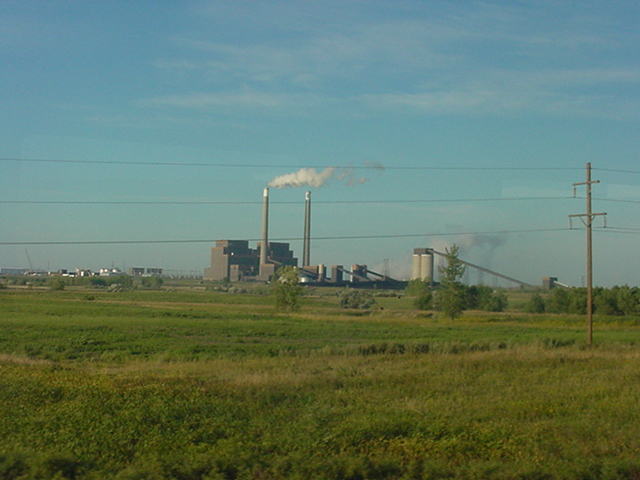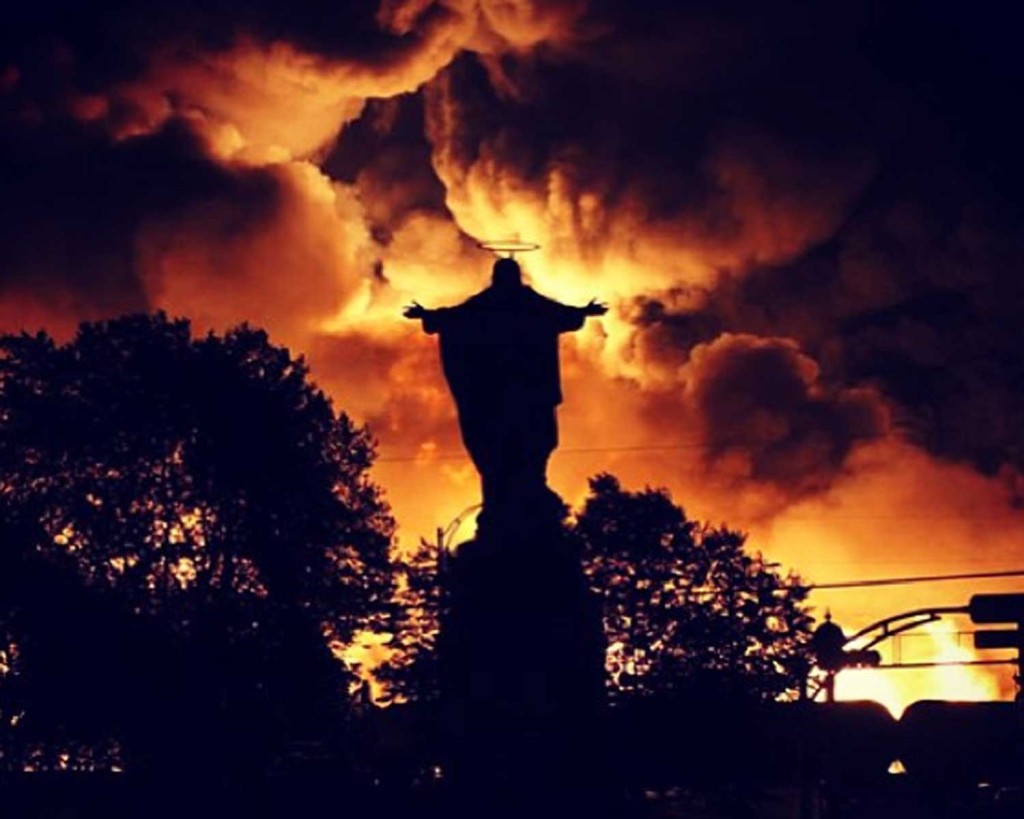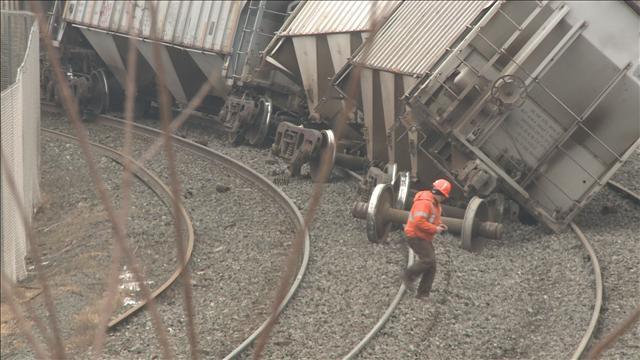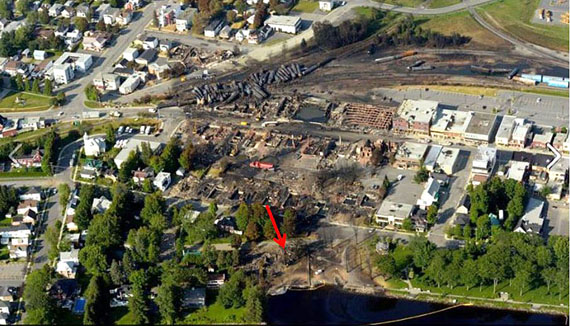Dayton bellyflops into the frac sand fracas
April 22nd, 2014
Gov. Tim Pawlenty was the “Green Chameleon,” but Gov. Mark Dayton doesn’t even pretend to be green. Today, he showed his true colors, delivering a harsh undercutting “rebuff” of a statement just prior to petitions being delivered to his office, petitions with 6,000 signatures, obtained with a lot of effort from a lot of citizens, requesting he enact a moratorium to stop new frac sand mines in Southeast Minnesota. To deliver this message in the way that he did says a lot for his regard for his constituents and their concerns. How hard would it have been to meet with those delivering the Petitions, to graciously accept them, and at least consider the request, take it under advisement?
I sure hope everyone is talking about our Governor. WOW!
6,000 signatures… how many does it take for a recall election?!?!?!?!
Here’s his statement:
++++++++++++++++++++++++++++++
As for the “Critical Areas Act” as the basis for a moratorium, well, I’m not so sure about that… There are a few steps that have to happen before it goes to the Governor. Minn. Stat. 116G.06.
Here’s where you can tell him directly what you think of his treatment of concerned Minnesotans:
Telephone: 651-201-3400
Toll Free: 800-657-3717
The report on MPR:
Dayton says no to frac sand moratorium
The report in the STrib:
Dayton says no to frac sand moratorium in southeastern Minn.
Says he lacks authority for the southeastern Minnesota ban sought by mining opponents
DEIS Meetings for ITC Midwest’s MN/IA line
April 21st, 2014
This week we have three days of DEIS meetings, that’s Draft Environmental Impact Statement for the uninitiated. The schedule:
Fairmont Tuesday, April 22, 2014 1:00 p.m. and 6:00 p.m. Knights of Columbus Hall 920 East 10th Street Fairmont, MN 56031 Jackson Wednesday, April 23, 2014 1:00 p.m. and 6:00 p.m. National Guard Armory 108 County Road 51 Jackson, MN 56143 Blue Earth Thursday, April 24, 2014 1:00 p.m. and 6:00 p.m. Hamilton Hall 209 South Main Street Blue Earth, MN 56013
This project is important because, well, look at the red line in the map above that represents this project. It connects on the west to the Split Rock-Lakefield Jct. line from a decade ago, and then goes east, and drops down into Iowa, to become part of a web headed toward Chicago. The red and green on that map constitute MISO designated MVP3, and to the east, the orange and blue are MVP 4, and further to the east, 1/2 of which is Badger Coulee, is MVP 5. Important to note that there are 17 MVP projects, and all 17 must be built to offer the benefits touted, the modeling included all 17. Not only that, but cost apportionment also included costs to states beyond just the percentage of the one project under review, i.e., there are claims of benefits of MVP 3, but those benefits require MVP 4 and MVP 5, and in fact, ALL the 17 MVP projects. Costs to Minnesota ratepayers are “just” a portion of MVP 3, but there are also costs to Minnesota of MVP 4, MVP 5, and I think ALL of the 17 MVP projects. So the benefits that are reliant on all the 17 projects being built must be balanced against the costs attributable to Minnesota for all 17 projects! See, that wasn’t so hard, was it!
Here’s the DEIS from the Commerce ITC MN/IA DEIS page, it’s easier to cut and paste, though it’s a good idea to download because you never know when links will be changed or disappear:
Draft Environmental Impact Statement Text
- Abstract
- Table of Contents
- Summary
- Section 1 – Introduction
- Section 2 – Regulatory Framework
- Section 3 – Overview of Project and Alternative Routes and Sites
- Section 4 – Alternatives to the Proposed Project
- Section 5 – Affected Environment, Potential Impacts and Mitigation Measures
- Section 6 – Impacts and Mitigation Measures for Specific Regions / Segments
- Part 1 – Lakefield to Huntley Segment
- Part 2 – Resource Maps (9.2 MB)
- Part 3 – Resource Maps (7.3 MB)
- Part 4 – Resource Maps (8.3 MB)
- Part 5 – Huntley to Iowa Border Segment
- Part 6 – Resource Maps (6.2 MB)
- Part 1 – Lakefield to Huntley Segment
- Section 7 – Relative Merits of Routing Options
- Section 8 – References
Appendices
- Appendix A – Scoping Decision (5.7 MB)
- Appendix B – Generic Route Permit Template and Example Route Permit
- Appendix C – Transmission Line Structures
- Appendix D – Photo Simulations
- Appendix E – Example Agricultural Impact Mitigation Plan
- Appendix F – Noise Supplement
- Appendix G – Property Values Supplement
- Appendix H – EMF Supplement
- Appendix I – Archaeological and Historic Resources Data
- Appendix J – Route Analysis Data Tables
- Appendix K – Rare Resources and Rare Species
- Appendix L – Map Book
- Overview Map
- Part 1, Map Sheets LH1 to LH19 (7.3 MB)
- Part 2, Map Sheets LH20 to LH44 (8.6 MB)
- Part 3, Map Sheets LH45 to LH57; HI1 to HI12 (7.7 MB)
Minnesota’s Next Gen Energy Act unconstitutional
April 19th, 2014
Judge Susan Richard Nelson issued an order yesterday declaring Minnesota’s Next Generation Energy Act unconstitutional because it “constitutes impermissible extraterritorial legislation and is a per se violation of the dormant Commerce Clause.”
I finally found a copy of the decision, I was looking in all the wrong places. Here’s the Order (thanks to the STrib for posting it):
April 18 2014 Order – Next Generation Energy Act Suit Minn. Stat. 216H.03
It’ll likely be appealed, but I wouldn’t bet on any success. The impact of this decision will be what I’ve been expecting — dreadful — the doors are open for even more coal plants (note the discussion of surplus capacity in the decision) and with CapX mostly built, we’ve got the infrastructure for 50+ years of coal generated electricity exports across Minnesota to market, and 50+ years of mercury for our fish, and all those emissions for us to breathe. Great, just great.
Bakken BOOM and rail safety
April 17th, 2014
There are more and more aspects of rail safety coming into question as people learn about life with the many Bakken oil trains rolling through our communities.
What about the greatly increased air emissions due to the increased rail traffic? Locomotive emissions are regulated:
The short version, from the EPA:
General Information
- Fact Sheet: Control of Emissions from Idling Locomotives (PDF) (4 pp, 143K, EPA-420-F-13-050, December 2013)
- Fact Sheet: Federal Preemption of State and Local Standards for Locomotives (PDF) (3 pp, 11K, EPA420-F-97-050, December 1997)
- Summary of emission standards
That regulates individual locomotives, but how are the cumulative impacts of so many trains addressed, particularly in the Mississippi River Valley, the “land of inversions?”
There’s continued talk about the new DOT111 rail cars, but how will that address the problem of volatility, that the Bakken crude contains a much higher level of gas than other crude, and that although regulators have said that the Bakken crude should be degasified before it is shipped, whether by rail or pipeline, this is not yet incorporated into standard practice. And it bears repeating — this is an issue for Bakken crude in pipelines! Pipelines are not a miracle cure for the Bakken crude volatility problem!
It can happen here. It has happened here. It will happen here. What do we do to protect ourselves?
This is a train incident in September, 2013 just across the river in Hager City, WI:
And in Red Wing:
A Wisconsin town’s fire chief was part of a discussion with U.S. Rep. Ron Kind recently regarding rail safety. The station is one block from the river and the railroad tracks. Congressman Kind asked the fire chief what the impact of a Bakken oil wreck would be on his community, if the fire unit could respond, and the fire chief said, “I doubt it, we’d be vaporized.”
If a Lac Megantic level explosion occurred in Red Wing, presuming that buildings two blocks from the explosion would be leveled, and maybe three blocks, it would reach to Main Street, and perhaps the block beyond:
This is how it is in all the communities along the Mississippi River, a disaster waiting to happen for us, for the River.
There’s a reason it’s called the “Bakken Boom.” BOOM!
And in the La Crosse Tribune:
Meeting set on rail expansion
plan
5 hours ago • BETSY BLOOM bbloom@lacrossetribune.com
Hollydale yesterday… interesting…
April 11th, 2014
This is the Hollydale Project proposed route, the one that Xcel Energy couldn’t demonstrate need for if their Certificate of Need depended on it, and it did, and they didn’t. Hence their petition to the Minnesota Public Utilities Commission for withdrawal of Applications for both their Certificate of Need (12-113) and their Routing Permit (11-152). I love it when that happens…
This was a great victory to get Xcel to acknowledge that this project was in trouble, that they couldn’t demonstrate need, not that they admitted it outright, but close enough. The down side is that they are persistent, and when they want something, they keep trying, sometimes the same thing, sometimes something different. What will they do here? Who knows, but I doubt they’ll disappear.
There was a surprise filing letter and proposed decision option sent by Paula Maccabee on behalf of WPNA at 8:37 a.m., less than an hour before the meeting began, and half an hour after we’d already left for St. Paul, first I learned of it was when it was passed out at the meeting.
Here are the changes that were requested:
D. Future Filing Requirements
2. Require the company to file
a discussion on their public outreach efforts andan update on improvements made to theload serving capacity of thedistribution system serving the area six months from the date of the order granting withdrawal and quarterly thereafter.
I don’t get it… why? And no, that doesn’t work. Where Xcel is saying they’ll be back, after developing a more palatable option through discussions with stakeholders, why eliminate the disclosure of its “public outreach efforts? Thankfully, this was not adopted.
From Xcel’s filings, it’s clear that the Hollydale Project is “desired,” strongly desired, despite that it’s not “needed” in any criteria-based sense. Xcel wants this project so badly that it has stated that if permitted to withdraw this application, it is coming back, and that:
The residents of Plymouth and Medina, as well as other key stakeholders, have expressed serious concerns about the potential impacts of this Project…
… that “it may take some time to collaborate with stakeholders on developing a new solution…”
… and that it “intends to work with the community and stakeholders on developing a more widely supported electrical solution…”
Those words get me more than a little concerned, particularly where at a meeting organized by Commerce at Plymouth City Hall, after we’d gone around the room in introductions, Sen. Bonhoff said, very pointedly to me, “Who are you?” “Why are you here?” “Who is the Barry Family?” I got the idea that she though I shouldn’t be there, that it was to be a more private party, and I shouldn’t have been invited. And yesterday, a woman present in support of WPNA asked the same questions. Hmmmm… Oh well. We’re parties to this party!
This Hollydale Project was an odd project, in ways that weren’t fully addressed in the proceeding:
- First is the inherent legal definition of transmission – this project, as proposed, would change this line from a relatively unregulated 69 kV line to a highly regulated “High Voltage Transmission Line” as defined in statute.
- The project as proposed represents a significant physical and electrical change, from an inactive 69 kV line to a high capacity HTVL that is an operating part of the grid.
- This project would require a change in ownership – Xcel is requesting to buy the easement, gain the powers that ownership of easement interests represents, and planned to use the easement to build a line of a very different character than what was built under the original easement.
- This project would change the purpose of the line through Plymouth and Medina, from a purpose of rare emergency backup for the local distribution system, to a high capacity grid support for the 345 kV system.
Now the application has been withdrawn. Xcel says it’s going to work collaboratively to come up with a “new solution.” Let’s see what happens next!









